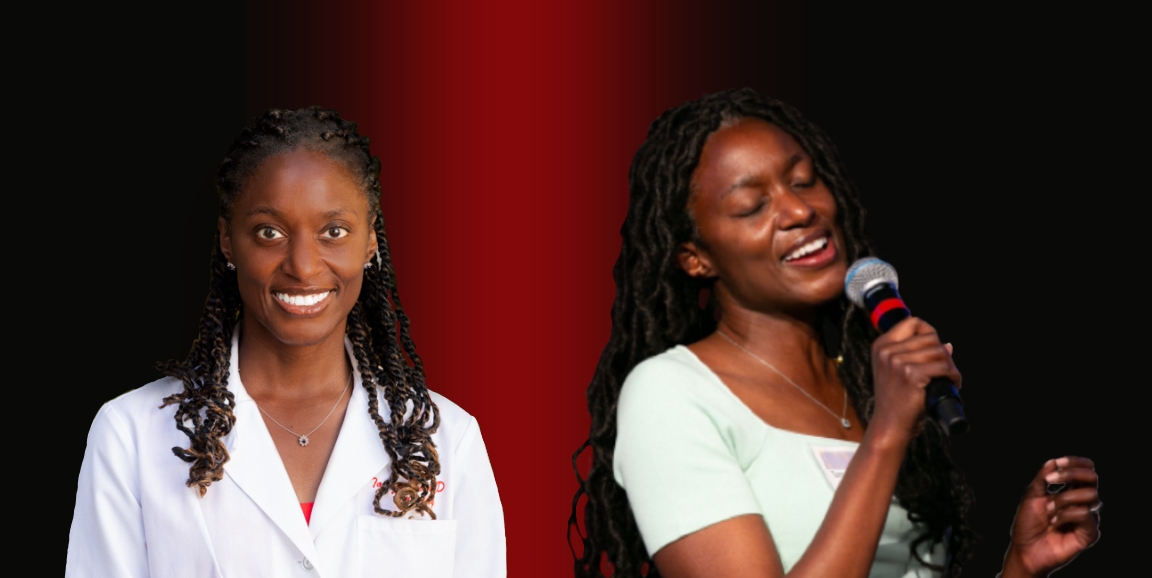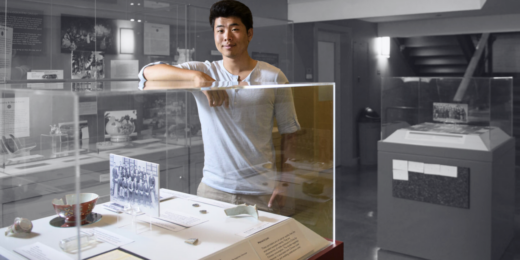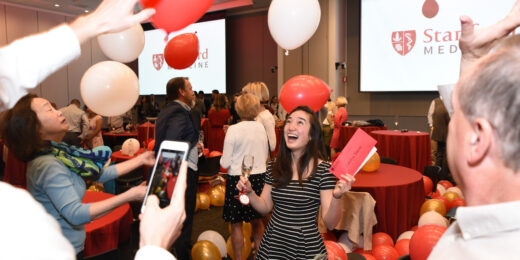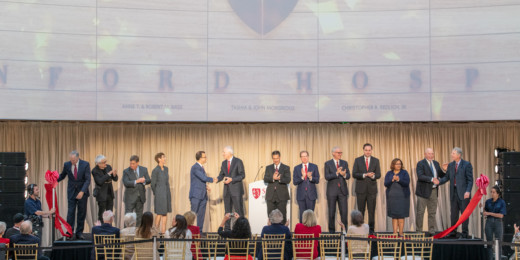The eyes of Tamara Dunn, MD, light up when she talks about her passions.
The eclectic Stanford Medicine hematologist has many of them, but two that rise above the rest: practicing medicine and performing music. Both have been part of her life for nearly as long as she can remember.
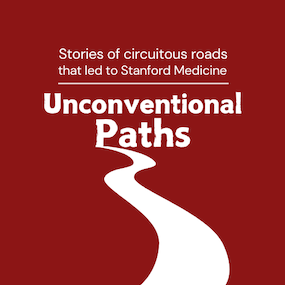
As the daughter of a dentist surrounded by Black physician family friends, she grew up wanting to be a doctor. And she found her knack for the stage at age 9, singing and acting.
Now a clinical associate professor of hematology, Dunn has managed to keep up with both interests for much of her adult life, and has even at times combined the two by performing for patients or coworkers.
"When I was young, people kept asking me, 'What, are you going to be a singing doctor?'" Dunn said. "I didn't realize at the time but I suppose the answer was yes!"
Her path was circuitous. After stints auditioning and performing in New York City and a brief detour working in finance, Dunn returned to medicine and to Stanford University -- the school she had attended as an undergrad and honed her talents as a performer -- for her residency. Now, she sees patients at the Palo Alto Veterans Affairs Medical Center and is an associate chair of diversity and inclusion at Stanford Medicine.
Music gives Dunn the type of buffer she believes all practicing physicians need to protect themselves from burnout -- so much so that she continues to make time in her schedule to sing despite the pressures of her job and parenting three children. And she sees key similarities and differences in her demanding career as a doctor and how she feels while expressing herself through song.
"They're both rooted in connection, they're both fulfilling, but they're different in how I experience them," she said. "There was a time where I was overextended and at risk for burnout. And sharing the joy of music and its unifying force proved to have healing powers."
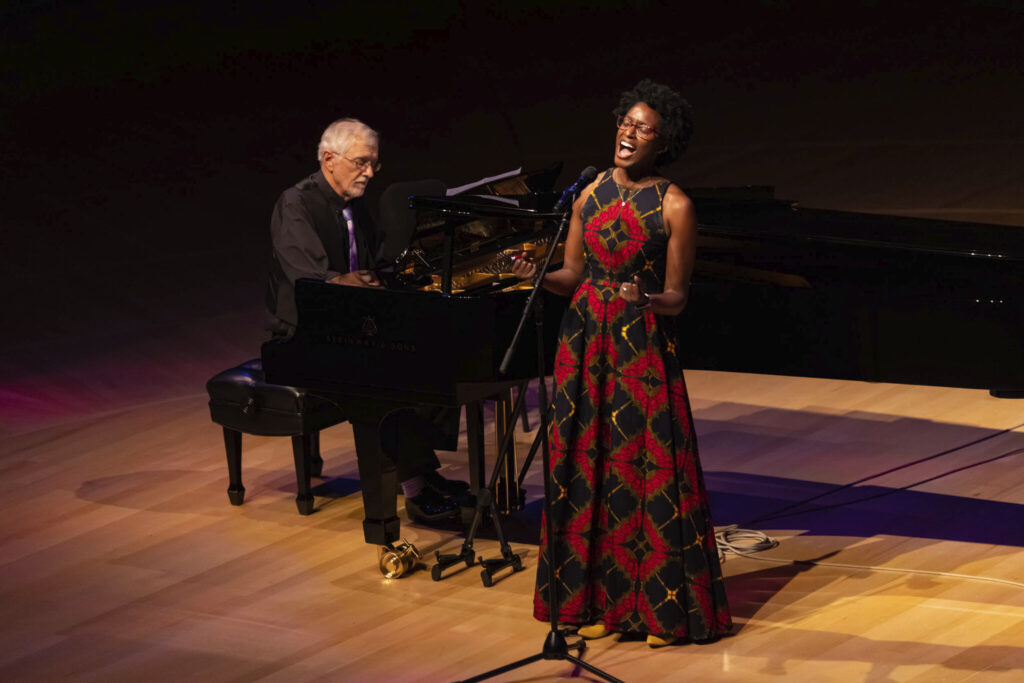
Musical exploration
Dunn grew up in Kansas City and can't remember a time when she didn't want to be a doctor. She had always loved science, had a passion for connecting with and helping others, and grew up surrounded by other doctors and medical professionals whom she admired, most of them Black. "To have role models you can see yourself in had a profound effect," she said.
Despite the detours her path later took, as a child and as a teenager, she was dead set on medicine. It's an attitude she tries to discourage in her mentees, she said.
I tell young folks that you should never close yourself off to possibilities. You don't know who you're going to be in 15 or 20 years.
Tamara Dunn
"I tell young folks that you should never close yourself off to possibilities," Dunn said. "You don't know who you're going to be in 15 or 20 years. I think exploration is a good thing for one's development."
Dunn's perspective shifted when she was 15 and her mother unexpectedly passed away.
"I was hit with the reality that you never know what's going to happen to you the next day or the next moment," she said. "I really adopted this carpe diem philosophy."
As a college student at Stanford, her performing life "exploded," Dunn said. She'd been in several plays and musicals in high school, but in college she found many more opportunities to pursue singing and acting. She joined an a cappella group and another band with her fellow dormmates that continued through her undergraduate years.

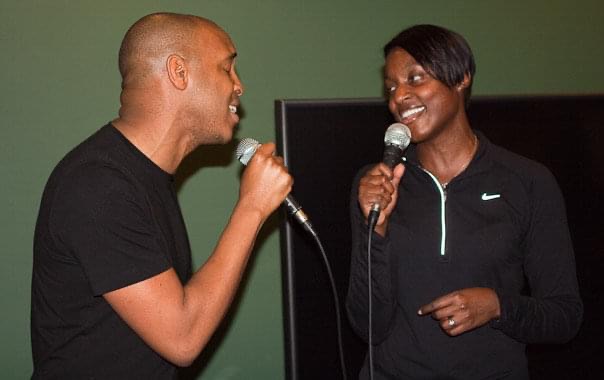
The band, whose name shifted from River Bottom Groove to Fez to Odd Job, played an eclectic mix, from funk to soul to acid jazz. It was a time of musical exploration for Dunn. And the group was popular -- by her sophomore year, they were booked almost every weekend for parties around campus.
She also auditioned for musicals through Ram's Head, Stanford's oldest student-run theater organization. Although she was devastated not to be cast in her favorite musical, West Side Story her freshman year, she played leading roles in other musicals down the line.
From West Side Story to the trading floor
By her sophomore year, Dunn had decided to change her major from human biology to French. And by the end of her college career, she'd decided to pursue performing more seriously. She was accepted to the American Musical and Dramatic Academy on Manhattan's Upper West Side and moved east to launch an acting career.
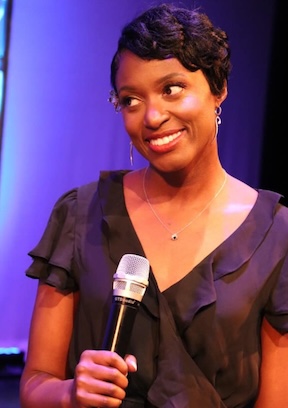
She spent two semesters at the academy, where she had her first exposure to formal dance instruction. After that, Dunn was doing the "typical" bartending to pay her rent while auditioning wherever she could. She got some parts in off-off-off Broadway shows -- including, finally, in her beloved West Side Story. She also met and started performing with musician Ben Eyler, landing gigs in Downtown Manhattan and making recordings.
But eventually, the bartending-and-auditioning life wasn't cutting it. She would see friends from Stanford in law school or medical school and felt a self-inflicted pressure to start on a more traditional path.
"My performance itch never went away," she said. "But the reality of not getting a big break and not having financial security in that realm -- it hit me."
To move away from the bartending life, Dunn took an administrative job at a hedge fund company in New York. Soon, she moved to the financial team, working on the trading floor.
"To this day, it makes me chuckle at how much of a fish out of water I was," Dunn said. "As much passion as I have for medicine and for performing, finance was really not my jam."
It started to feel like it was time to get back to the medicine trail. Though she still kept an eye out for musical opportunities, she started taking college classes to fulfill pre-med requirements and studying for the Medical College Admission Test.
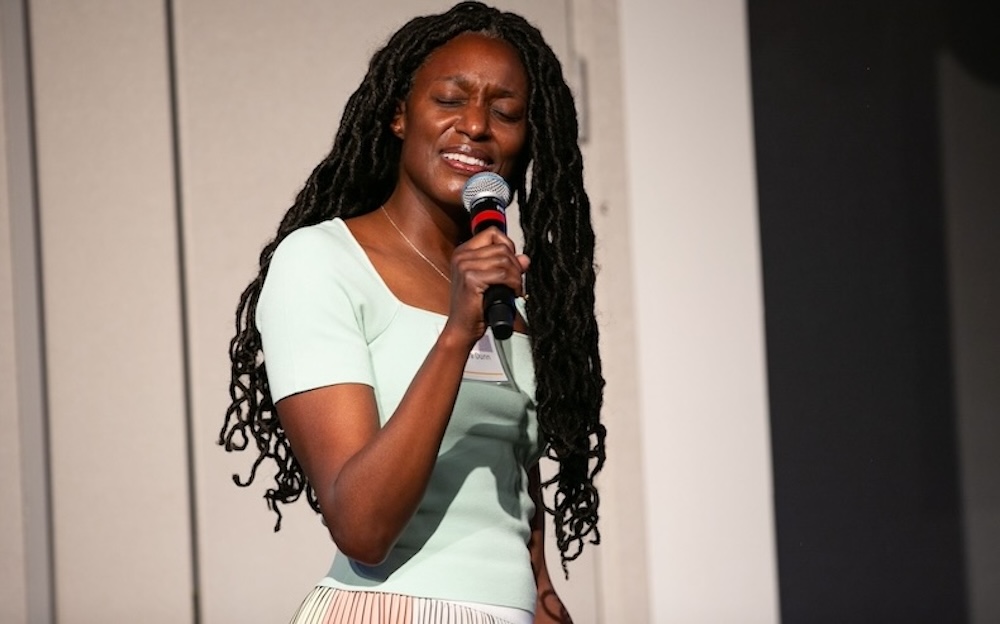
The singing doctor
Once Dunn started medical school at SUNY Downstate College of Medicine, musical theater auditions took a backseat. But she continued to sing wherever she could. One year, she won a medical school talent show, earning the honor of singing the national anthem at a Brooklyn Cyclones game. Unbeknownst to her, her proud father began working on getting her an opportunity to sing the anthem at a major league game. Soon, magically she found herself on the field at a Kansas City Royals game.
"That was pretty amazing," she said.
After medical school, Dunn returned to Stanford University for her residency and fellowship, following a keen interest in blood disorders. She remembers devouring the hematology chapter in her pathology textbook during her second year of medical school and then immediately re-reading it.
As a fellow, she connected with a group of Stanford Medicine musicians who would sometimes perform on the cancer wards. Once she took a faculty position, performing slipped to the back burner. But Dunn always sang wherever and to whomever she could -- including to her patients on their birthdays.
Besides her busy medical practice, Dunn also immersed herself into medical education and diversity, equity and inclusion. Early in her career, she took on the role of program director for Stanford's Hematology/Oncology Fellowship program, which she held for seven years. She's also been working to improve diversity in the Department of Medicine, and she later became an associate chair of diversity and inclusion.
A few years ago, Dunn was seeing a life coach who asked her why she wasn't singing more. When Dunn said she didn't have time, the coach asked what it would look like if she made the time. That's when she reached out to a pianist and former band member, Terrigal Burn, MD, about performing together.
Burn, a former internist at Palo Alto Medical Foundation and Stanford Medicine, was retiring from medicine and looking to spend more of his time on music. The two started performing backyard concerts during the COVID-19 pandemic, and have performed around Stanford and in the surrounding communities ever since.
"It's just been a joy to have that back in my life," Dunn said.
Music has also been in many ways a life saver for Dunn. It's why she is committed to keeping both of her passions in place, music helping balance out the natural stressors of life.
"Music is my other hat," she said. "It's how I navigate the stress of being a doctor and having so many responsibilities."
Photo illustration: Emily Moskal (photos courtesy Tamara Dunn)
More Unconventional Paths
- How she flipped traditional genomics analysis on its head
- How archaeology inspired a path to family medicine
- Rock climber turned trauma surgeon
- Merging computation and biology
- From monasteries to medicine
- Bohemian wannabe turned Stanford nutritionist
Have a suggestion for a future subject of Unconventional Paths? Email sm_editors@stanford.edu.


